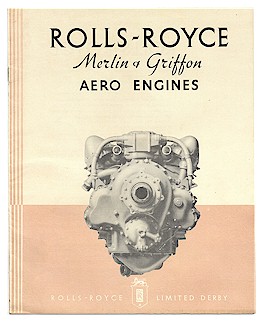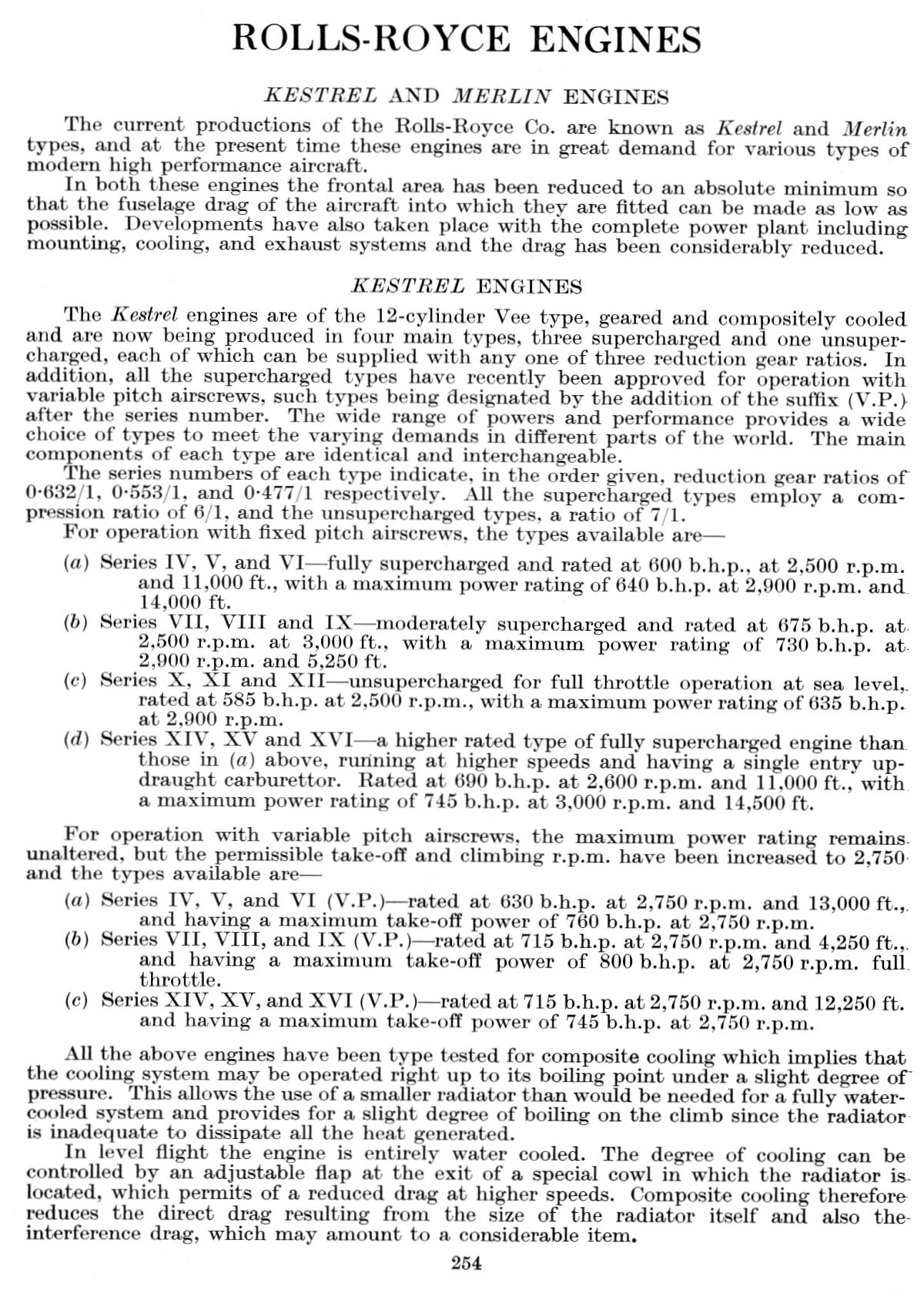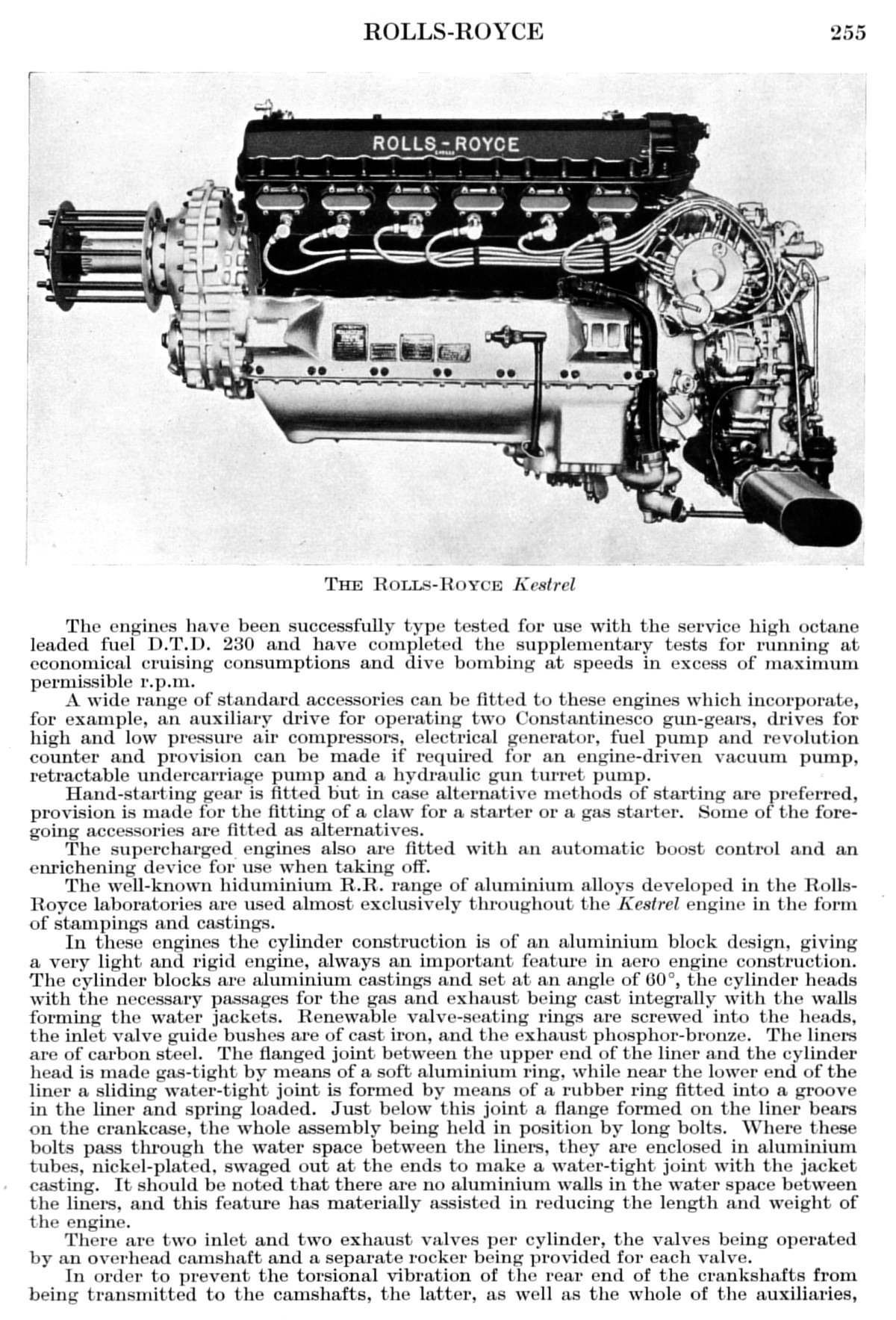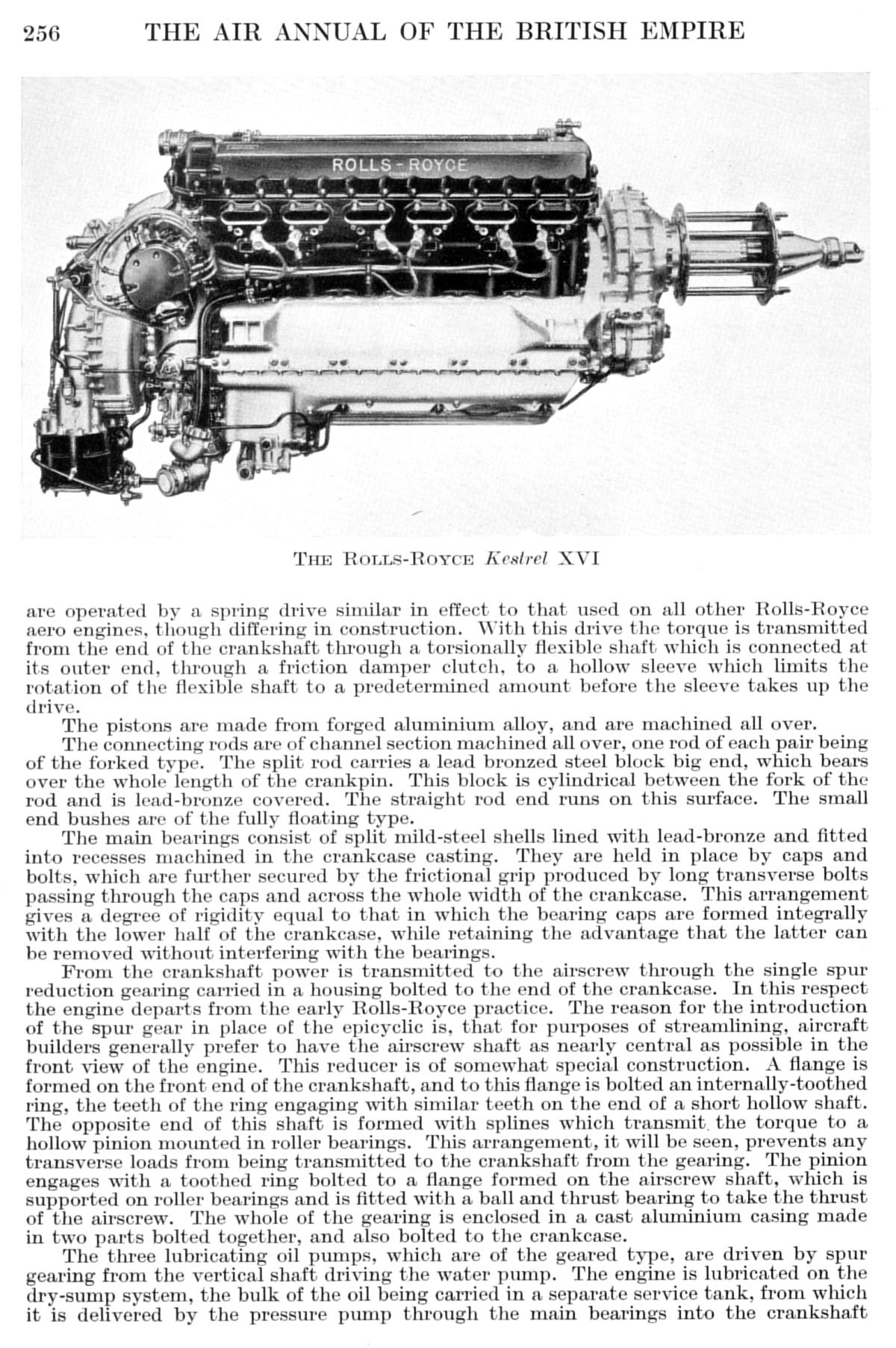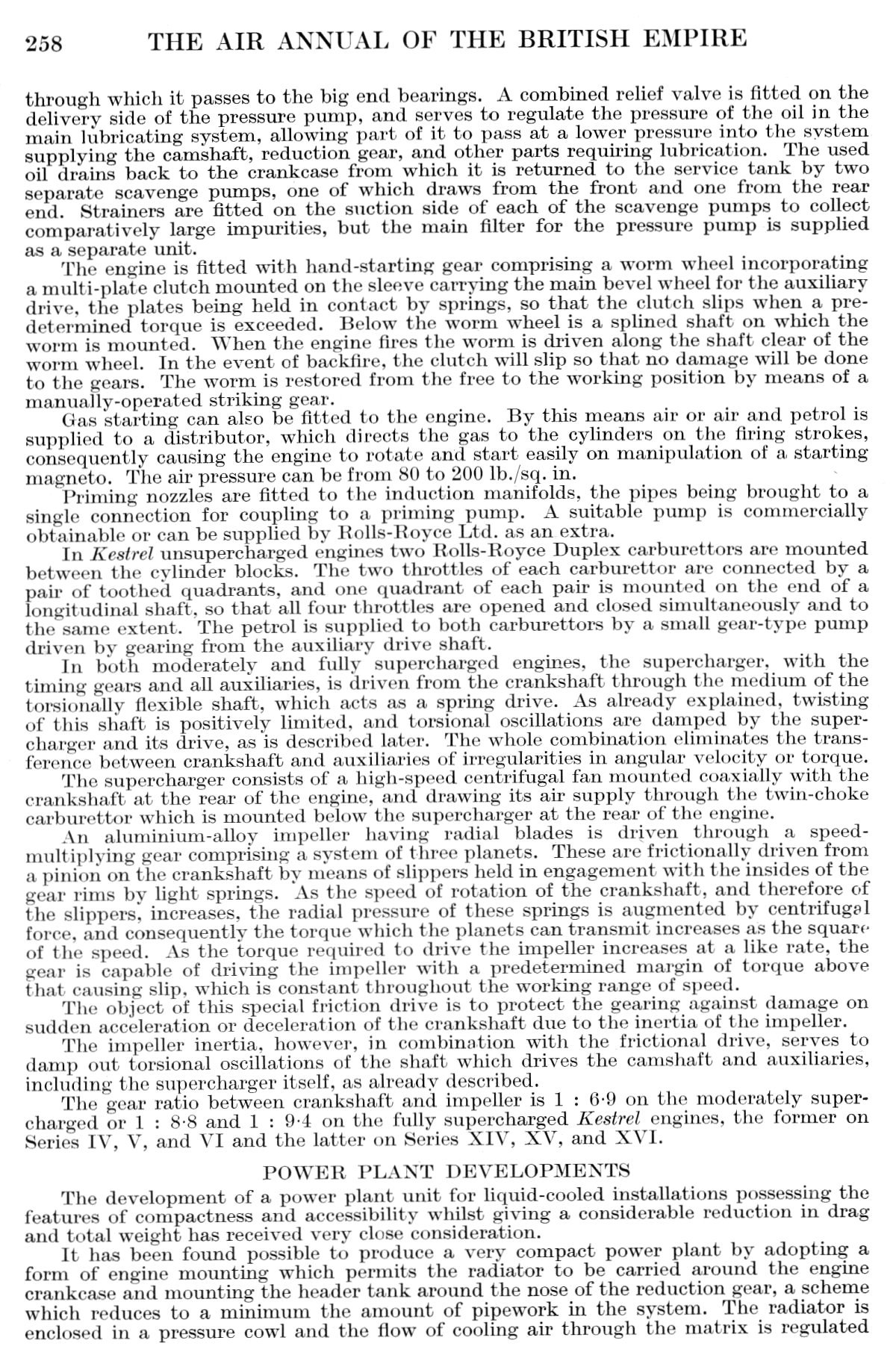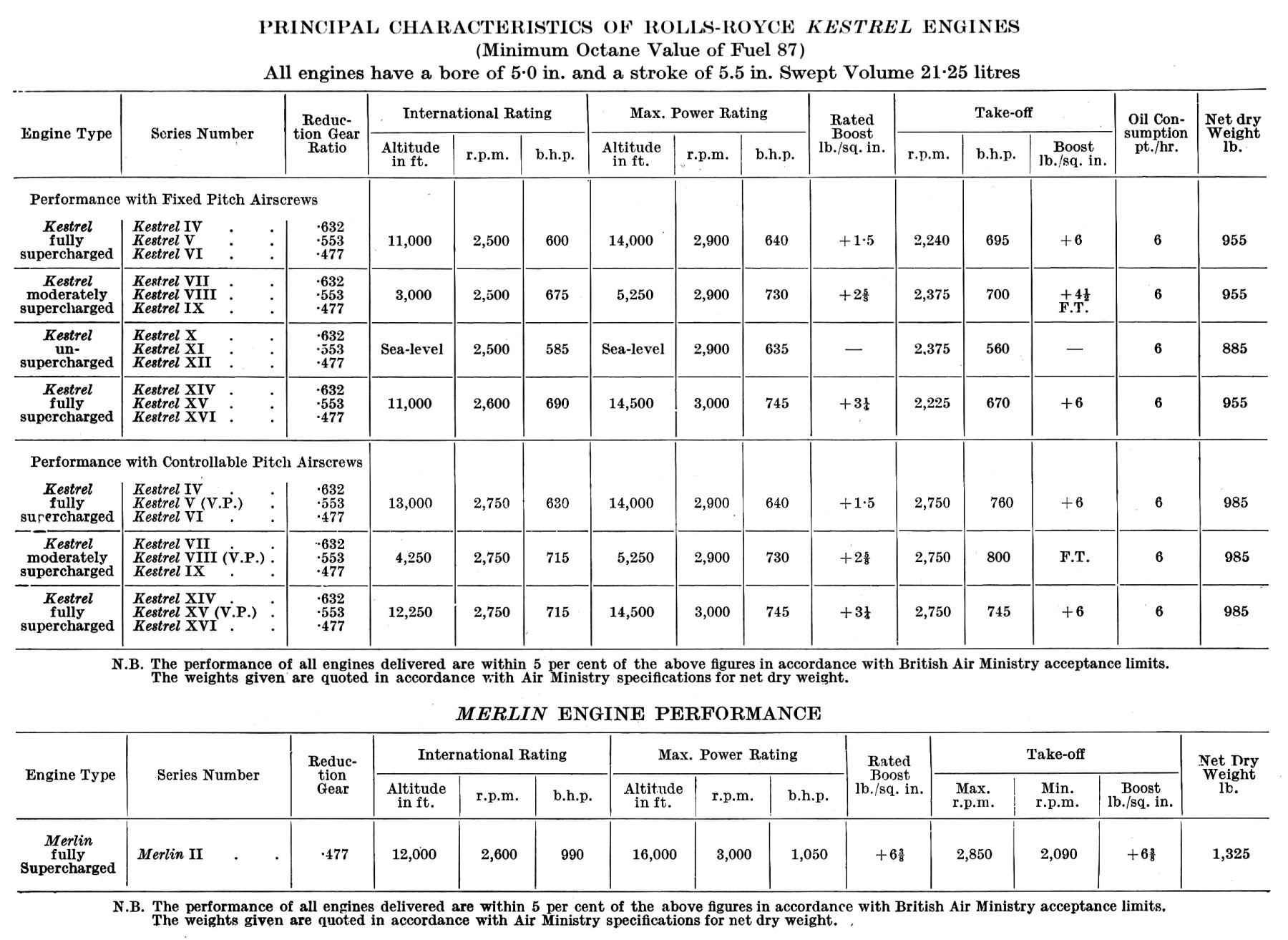
Στις αρχές της δεκαετίας του 1930, η Rolls-Royce ξεκίνησε την υλοποίηση του προγράμματος που αφορούσε την ανάπτυξη αεροκινητήρων μιας και οι ανάγκες για έναν κινητήρα μεγαλύτερο από 21 λίτρων τους (1.296 cu in), Kestrel που είχε χρησιμοποιηθεί με μεγάλη επιτυχία συνεχώς αυξανόταν . Οι εργασίες βασίστηκαν στη δημιουργία κινητήρα 1100 hp (820 kW) γνωστός ως PV-12, (12-κύλινδρο). Το PV-12 δοκιμάστηκε στις 15 Οκτωβρίου του 1933 ενώ πέταξε για πρώτη φορά προσαρμοσμένος σε ένα διπλάνο Hawker Hart στις 21 Φεβρουαρίου 1935. Το Hawker Hart στη συνέχεια παραδόθηκε στη Rolls-Royce, όπου χρησιμοποιήθηκε ως πλατφόρμα δοκιμών των κινητήρων Merlin, ολοκληρώνοντας πάνω από 100 ώρες πτήσης με τις μηχανές Merlin C και Ε.
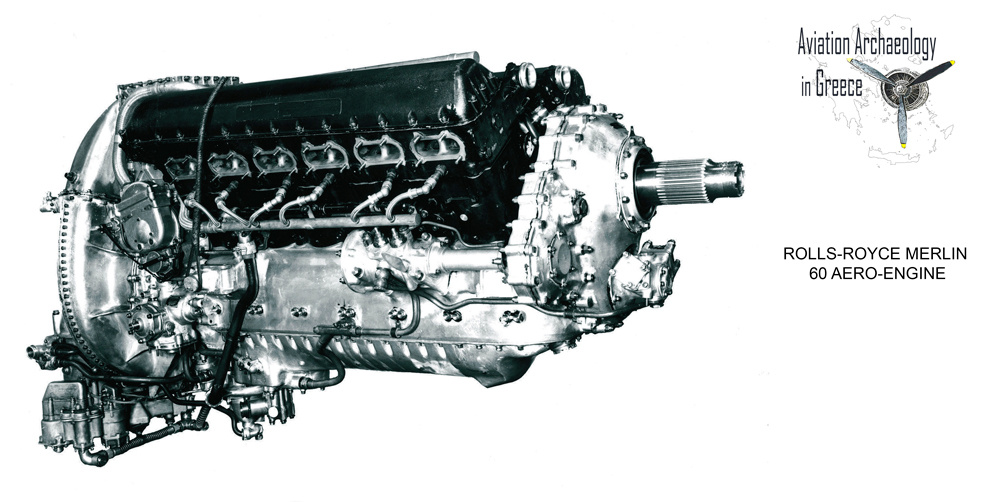
Το 1935, το Βρετανικό Υπουργείο Αεροπορίας εξέδωσε προδιαγραφές για τα νέα μαχητικά αεροσκάφη με ελάχιστη ταχύτητα αέρα 310 mph (500 χλμ/ώρα). Είδη είχαν αναπτυχθεί τα σχέδια Supermarine Spitfire και Hawker Hurricane. Και οι δύο τύποι αεροσκαφών είχαν σχεδιαστεί πάνω στον κινητήρα PV-12 και ήταν τα πιο σύγχρονα βρετανικά μαχητικά. Η παραγωγή για τα δύο αεροσκάφη ξεκίνησε το 1936, ενώ για την ανάπτυξη του PV-12 δόθηκε απόλυτη προτεραιότητα με τη χρηματοδότηση της κυβέρνησης.
Η Rolls-Royce ονόμασε τον κινητήρα Merlin, όνομα που προέρχεται από γεράκι το οποίο ζει στο Βόρειο Ημισφαίριο (Falco columbarius)
Ο Rolls-Royce Peregrine 700 hp (520 kW) και ο Rolls-Royce Vulture 1,700 hp (1,300 kW) 42-litre (2,560 cu in) που αναπτύχθηκε λίγο πριν από τον πόλεμο προστέθηκαν στην γκάμα της εταιρείας. Ο Rolls-Royce Vulture επρόκειτο να χρησιμοποιηθεί σε μεγαλύτερα αεροσκάφη, όπως το Avro Manchester.
Παρά το γεγονός ότι ο Rolls-Royce Peregrine φαινόταν να αποτελεί ένα ικανοποιητικό σχέδιο κινητήρα, δεν κατάφερε ποτέ πλησιάσει τις προσδοκίες των κατασκευαστών. Ως αποτέλεσμα, ο κινητήρας χρησιμοποιήθηκε μόνο σε δύο αεροσκάφη το μαχητικό Westland Whirlwind και σε ένα από τα πρωτότυπα Gloster F.9. Ο Rolls-Royce Vulture είχε τοποθετηθεί στο βομβαρδιστικό Avro Manchester, αλλά αποδείχθηκε αναξιόπιστος στην υπηρεσία και η προγραμματισμένη χρήση στα Hawker Tornado ακυρώθηκε. Αποτέλεσμα η τροποποίηση του Merlin με ώθηση 1.500 hp (1.100 kW). Ο Rolls-Royce Peregrine και Rolls-Royce Vulture ακυρώθηκαν το 1943. Μέχρι τα μέσα του 1943 ο Merlin αντικαταστάθηκε σταδιακά από τον μεγαλύτερο Rolls-Royce Griffon. Ο Griffon ενσωμάτωσε πολλές σχεδιαστικές βελτιώσεις και τελικά αντικατέστησε τον Merlin.
Aero engines
The company‚s first aero engine was the Eagle, built from 1914. Around half the aircraft engines used by the Allies inWorld War I were made by Rolls – Royce. By the late 1920s, aero engines made up most of Rolls–Royce‚s business.
Henry Royce‚s last design was the Merlin aero engine, which came out in 1935, although he had died in 1933. Thiswas developed after the R engine, which had powered a record–breaking Supermarine S.6B seaplane to almost400 mph in the 1931 Schneider Trophy. The Merlin was a powerful V12 engine and was fitted into many World WarII aircraft: the British Hawker Hurricane, Supermarine Spitfire, de Havilland Mosquito (two engine), Avro Lancaster(four engine), Vickers Wellington (two engine); it also transformed the American P51 Mustang into possibly the bestfighter of its time, its Merlin engine built by Packard under licence. Over 160,000 Merlin engines were produced. TheMerlin crossed over into military vehicle use as the Meteor powering the Centurion tank among others.
Rolls – Royce came into jet turbines through an exchange of assets with Rover and in the post World War II periodRolls Royce made significant advances in gas turbine engine design and manufacture. The „Dart“ and „Tyne„turboprop engines were particularly important, enabling airlines to cut times for shorter journeys whilst jet airlinerswere introduced on longer services. The Dart engine was used in Argosy, Avro 748, Friendship, Herald andViscount aircraft, whilst the more powerful Tyne powered the Atlantique, C–160 and Vanguard, and the SR–N4hovercraft. Many of these turboprops are still in service.
Amongst the jet engines of this period was the RB163 Spey, which powers the Hawker Siddeley Trident, BAC One–Eleven, Grumman Gulfstream II and Fokker F28.
During the late 1950s and 1960s there was a significant rationalisation of all aspects of British aerospace and thisincluded aero engine manufacturers, culminating in the merger of Rolls – Royce and Bristol Siddeley in 1966 (BristolSiddeley had itself resulted from the merger of Armstrong Siddeley and Bristol in 1959). Bristol Siddeley, with itsprincipal factory at Filton, near Bristol, had a strong base in military engines, including the Olympus, Viper, Pegasusand Orpheus.
They also manufactured the Olympus 593 Mk610 for Concorde.
Model
- Rolls–Royce Trent
- Rolls–Royce AE 1107C–Liberty
- Rolls–Royce AE 2100
- Rolls–Royce AE 3007
- Rolls–Royce BR700
- Rolls–Royce BR701
- Rolls–Royce BR710
- Rolls–Royce BR715
- Rolls–Royce RB.163
- Rolls–Royce RB.168
- Rolls–Royce RB.183 Tay
- Rolls–Royce RB.203 (2nd use of Trent)
- Rolls–Royce RB.207
- Rolls–Royce RB.211
- Rolls–Royce RB.213
- Rolls–Royce RB.401
- Rolls–Royce 250
- Rolls–Royce 501
- Rolls–Royce F113 (Spey Mk.511)
- Rolls–Royce F126 (Tay Mk.611 / 661)
- Rolls–Royce F137 (AE3007H)
- Rolls–Royce F402 (Pegasus)
- Rolls–Royce J99
- Rolls–Royce XV99–RA–1
- Rolls–Royce T56 (T501–D)
- Rolls–Royce T68
- Rolls–Royce T406
Rolls–Royce/Turbomeca
Source:Gunston
- Rolls–Royce/Turbomeca Adour/F405
- Rolls–Royce/Turbomeca RTM322
Rolls–Royce/SNECMA
- Rolls–Royce/Snecma Olympus 593
- Rolls–Royce/SNECMA M45H

